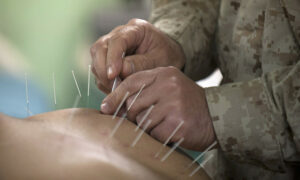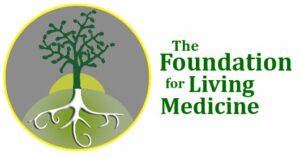
Acupuncture has been around for quite a long time. This form of medical treatment is a part of Chinese Medicine, a complete and separate system of medicine that has been used in China and Asia for over 3,000 years and is now used widely throughout the world.
It has survived to modern day and has evolved and been refined over the centuries. It is still practiced, used by millions daily, and its methodology is mostly intact from its early roots and humble beginnings. In those terms, it is most likely the longest research study in history. It is, by nature, a true holistic health system of prevention and treatment. It is a “path to balance” in one’s life.
Acupuncture consists of the gentle insertion and stimulation of thin, disposable sterile needles at strategic points near the surface of the body. Over 2,000 acupuncture points on the human body connect with 14 major pathways, called meridians. These meridians conduct Qi, or energy / life force / the spark of life, between the surface of the body and internal organs. It is Qi that regulates emotional, mental and physical balance. When the flow of Qi is disrupted through illness, injury, poor health habits, or other circumstances, pain and/or disease can result. Acupuncture helps to keep the normal flow of this energy unblocked, thereby enhancing the body’s natural tendency and ability to heal itself.
The earliest known accounts of acupuncture appear in the Huang Di Nei Jing: The Yellow Emperor’s Classic of Internal Medicine, a text from the second century BC, which laid down the principles of traditional Chinese medicine. Historic evidence documents that acupuncture arrived in the West in the 17th century through Jesuit missionaries and European explorers.
Chinese Communist leader Mao Zedong promoted Chinese traditional medicine during the Cultural Revolution (1966-1976) as a way to boost national identity and deliver cheap healthcare. With the mostly untold efforts of visionaries like renown Dr. Gladys Taylor McGarey, acupuncture spread back to the west and America after President Nixon’s visit to China in 1972, and it has grown steadily in popularity.
According to a 2012 report released by the World Health Organization (WHO), 93 percent of the 192 member states of the United Nations have acupuncture practices. Chinese medicine, of which acupuncture is a main modality, has spread to more than 100 countries. As of 2012, there are some 100,000 Chinese medicine clinics and some 300,000 Chinese medicine practitioners worldwide.
But is it the medicine the world has waited for?
I not only deeply believe this, but I also know it is the medicine the world desperately needs right now! Why? Let us look at the state of global health:
The World Health Organization
According to a WHO 2015 report, non-communicable diseases (NCD) or chronic disease kill 38 million people each year.
Almost three quarters of NCD deaths – 28 million occur in low and middle-income countries. Sixteen million deaths occur before the age of 70; 82% of these “premature” deaths are in low-income populations.
The Centers for Disease Control (CDC): The U.S.
According to the CDC, 70% of all deaths are due to chronic disease and the cost of chronic care exceeds $1.5 trillion a year or 75 % of all medical expenses.
Modern Medicine: Chronic Illness
Although modern western medicine is most effective in treating acute, lifesaving health procedures, its track record is not great when it comes to chronic illness. These conditions arise from a conflict-rich, war prone world where trauma runs rampant, a deteriorating and toxic planetary environment, nutrient depleted, overly processed and, at times for many, scarce food supplies, all leading to poor diet, obesity and malnutrition, addiction, neurological disorders, diminished cognitive function in children and adults, auto-immune disease, depression, mental illness and over reliance on pharmaceuticals. These are some of the key factors in the deteriorating health of humanity, in both developed and developing countries.
The current response of mainstream healthcare to chronic illness relies fundamentally on pharmaceutical solutions that have not resulted in the improvement of health. But rather, they result in mass over-prescription with sometimes dangerous and life threatening side effects, which then result in even more pharmaceutical solutions to ease the side effects and dependency, mostly life-long. This, in turn, can result in the displacement of well being and the exacerbation of initial causal behaviors.
Current policy is leading global healthcare in an ever less sustainable direction; whereby chronic disease and the potential need to provide lifetime, pan-global medication will result in healthcare and environmental costs that are far beyond the capacities of most countries.
Acupuncture and Chronic Disease: A Viable Global Solution
In a 2003 WHO official report, Acupuncture: Review and Analysis of Reports on Controlled Clinical Trials, the WHO has listed the following symptoms, chronic diseases and conditions that have been shown through controlled trials to be treated effectively by acupuncture:
Low back pain, neck pain, sciatica, tennis elbow, knee pain, peri-arthritis of the shoulder, sprains, facial pain (including cranio-mandibular disorders), headache, dental pain, tempro-mandibular (TMJ) dysfunction, rheumatoid arthritis, induction of labor, correction of malposition of fetus (breech presentation), morning sickness, nausea and vomiting, postoperative pain, stroke, essential hypertension, primary hypotension, renal colic, leucopenia, adverse reactions to radiation or chemotherapy, allergic rhinitis, including hay fever, biliary colic, depression (including depressive neurosis and depression following stroke), acute bacillary dysentery, primary dysmenorrhea, acute epigastralgia, peptic ulcer, acute and chronic gastritis.
In studies conducted by prominent institutions, like the National Institute of Health (NIH), Acupuncture has been shown to improve circulation, and thus, the exceleration healing of chronic and acute pain and injuries, and it can boost the immune system for preventative care and improved overall quality of life.
Acupuncture is a proven, cost effective medical treatment that can treat most common ailments and chronic conditions, and it is an excellent complement to other forms of healthcare that can often treat conditions for which conventional Western medicine offers little or no benefit.
Implementation of worldwide training curriculums of many more health professionals in Acupuncture and its integration into mainstream healthcare can be a vital piece potentially solving much of the global healthcare puzzle of chronic disease.
Written By: Anthony Giovanniello, MS., Ac., L.Ac.
Founder, Acupuncture Ambassadors
Acupuncture Ambassadors is a 501c3 Non-profit Organization that organizes acupuncture schools, training programs and clinics worldwide, in order to help refugees and the poor.
“Integrating the Medicine of Acupuncture into Global Healthcare”
